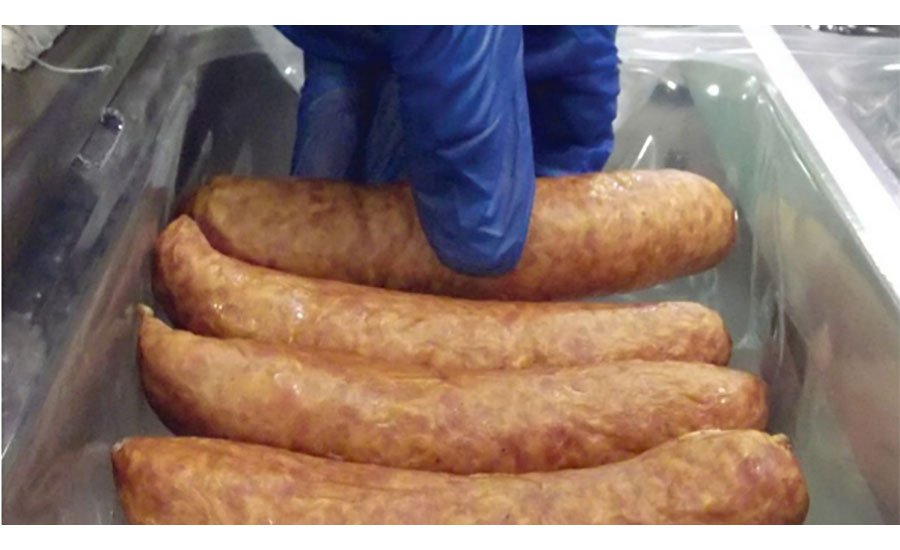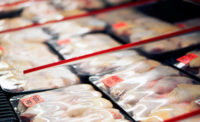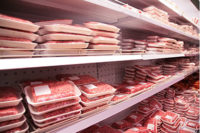New shelf-life extenders mesh perfectly with consumers’ continuing desire for convenience, food safety and prevention of food waste. The key? Their packaging technology.
“There are a couple of methods for eliminating Listeria monocytogenes that the larger companies have been using that can be adapted for smaller processors,” says Lynn Knipe, Ph.D., associate professor, The Ohio State University, located in Columbus, Ohio. “Both methods involve a variation of the cook-in-the-bag process, which eliminates the potential for surface contamination by L. monocytogenes or survivors in the package up to the point that the consumer opens the package.”
Indeed, these techniques can even allow for a cleaner label, as heat is used to eliminate Listeria, not antimicrobial agents.
“One method is post-package pasteurization that involves reheating the surface of vacuum-packaged, ready-to-eat meat products to eliminate L. monocytogenes that may have contaminated the surface of products when exposed to the environment during packaging,” says Knipe.
A reheating procedure that was designed with smaller processors in mind has been validated for ham and sausage products, notes Knipe.
In addition, the cook-in-bag concept is being incorporated into the co-extrusion process for making sausage links. However, “this technology is very expensive and not feasible for smaller processors,” says Knipe.
The food safety benefits of cook-in-the-bag technology are valuable though. Even natural casing sausage products are beginning to utilize cook-in-bag technology more.
“To accomplish this with natural casing links, these products are partially cooked [to about 130ºF internal] and smoked [either liquid or hard wood smoke], then loaded into retail packages, vacuum-sealed and cooked in either hot water or steam cooked in an oven,” says Knipe.
The partial cooking allows the links to firm up just enough, so that they can be handled during the packaging process. “Grilling could also be used as the initial cooking step, to apply grill marks and surface browning to links that are not smoked, before finishing the cooking in the vacuum package,” says Knipe.
Controlling color and moisture
Skin packaging is also being seen more in the meat case today. “It’s the newest option – similar to vacuum packaging but it doesn’t collect the same amount of drip, and is more affordable,” says Mahesh Nair, Ph.D., assistant professor of animal sciences, Colorado State University, Fort Collins, Colo.
Skin packs differ from traditional packaging in that the plastic film used to cover the product is softened by heat to adhere to the heat-seal coating on the paperboard or trays, sometimes with the assistance of a vacuum fit. Then, the product(s) can be cut into individual units.
Vacuum sealing removes almost all of the residual oxygen, so shelf life is extended, product stays moist and better yet, product looks more appealing.
“It’s always a challenge to manage drip,” says Nair. “Vacuum packaging works best to control drip and color, but it’s not new.”
Nitrite-embedded packaging film is another affordable way to extend fresh beef’s color and shelf life. In addition, it allows frozen beef to keep a bright red color, because it limits photooxidation.
HPP advancements
High-pressure processing (HPP) allows companies to ensure high levels of food safety without relying on preservatives, explains Nicole Glenn, vice president of marketing for Applegate.
“HPP of raw meat products is an interesting area that could enable Applegate to create a number of options for consumers. This is an area where the shelf life extension is every bit as important as the food safety,” she adds. “One of the barriers for Applegate entering this space has been managing the logistics of very short shelf life of fresh cuts of meat. Some of the research around texture and color improvements associated with using HPP with ready-to-cook meats is also very promising.” IP





Report Abusive Comment